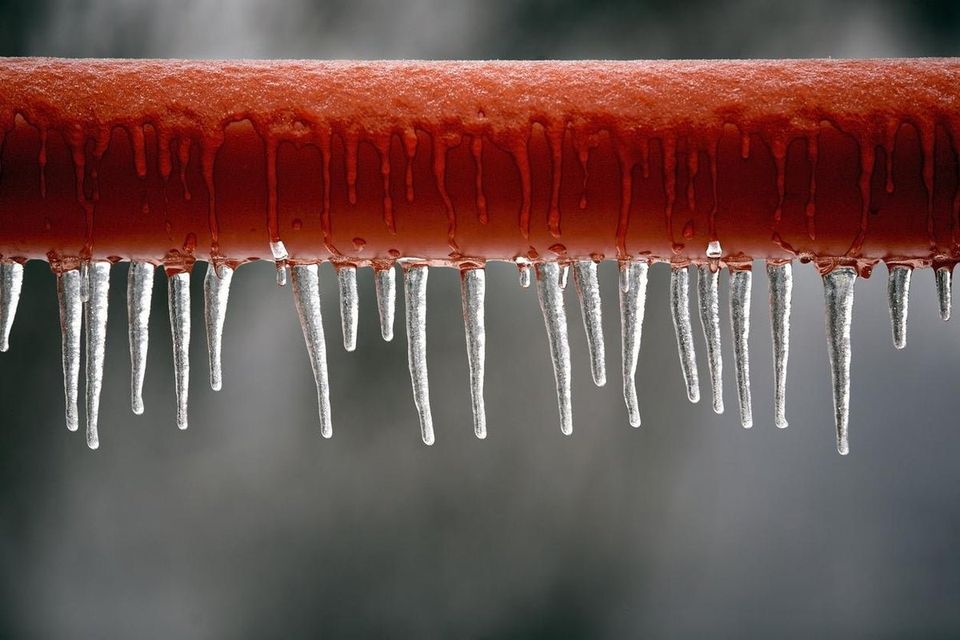Essential Advice to Prevent Frozen Plumbing in Cold Weather
Essential Advice to Prevent Frozen Plumbing in Cold Weather
Blog Article
Just how do you actually feel on the subject of Winter Plumbing Precautions: Preventing Frozen Pipes?

Cold weather can damage your pipes, specifically by freezing pipes. Right here's how to stop it from taking place and what to do if it does.
Introduction
As temperature levels decline, the risk of icy pipes rises, potentially resulting in pricey repair work and water damage. Comprehending how to avoid icy pipes is critical for property owners in chilly environments.
Understanding Frozen Pipelines
What creates pipelines to freeze?
Pipes freeze when subjected to temperature levels listed below 32 ° F (0 ° C) for extended periods. As water inside the pipes freezes, it expands, putting pressure on the pipe walls and potentially triggering them to rupture.
Dangers and damages
Frozen pipes can result in water system interruptions, property damage, and pricey fixings. Ruptured pipes can flood homes and create substantial structural damage.
Indicators of Frozen Water Lines
Determining icy pipelines early can avoid them from bursting.
Exactly how to identify frozen pipelines
Look for reduced water circulation from taps, uncommon smells or noises from pipelines, and visible frost on revealed pipelines.
Avoidance Tips
Protecting susceptible pipes
Wrap pipes in insulation sleeves or make use of warm tape to protect them from freezing temperature levels. Concentrate on pipes in unheated or outside locations of the home.
Heating methods
Maintain indoor spaces appropriately heated up, particularly areas with pipes. Open cupboard doors to enable warm air to distribute around pipes under sinks.
Securing Exterior Pipes
Yard tubes and exterior taps
Separate and drain pipes garden hose pipes before winter season. Install frost-proof faucets or cover exterior faucets with protected caps.
What to Do If Your Pipes Freeze
Immediate activities to take
If you presume frozen pipelines, keep faucets open up to ease stress as the ice thaws. Use a hairdryer or towels taken in warm water to thaw pipes slowly.
Long-Term Solutions
Architectural changes
Think about rerouting pipelines far from exterior wall surfaces or unheated areas. Include additional insulation to attics, cellars, and crawl spaces.
Upgrading insulation
Invest in high-grade insulation for pipes, attics, and wall surfaces. Appropriate insulation aids keep regular temperature levels and reduces the threat of icy pipelines.
Conclusion
Preventing frozen pipes calls for aggressive actions and quick responses. By understanding the causes, signs, and safety nets, homeowners can safeguard their plumbing throughout cold weather.
5 Ways to Prevent Frozen Pipes
Drain Outdoor Faucets and Disconnect Hoses
First, close the shut-off valve that controls the flow of water in the pipe to your outdoor faucet. Then, head outside to disconnect and drain your hose and open the outdoor faucet to allow the water to completely drain out of the line. Turn off the faucet when done. Finally, head back to the shut-off valve and drain the remaining water inside the pipe into a bucket or container. Additionally, if you have a home irrigation system, you should consider hiring an expert to clear the system of water each year.
Insulate Pipes
One of the best and most cost-effective methods for preventing frozen water pipes is to wrap your pipes with insulation. This is especially important for areas in your home that aren’t exposed to heat, such as an attic. We suggest using foam sleeves, which can typically be found at your local hardware store.
Keep Heat Running at 65
Your pipes are located inside your walls, and the temperature there is much colder than the rest of the house. To prevent your pipes from freezing, The Insurance Information Institute suggests that you keep your home heated to at least 65 degrees, even when traveling. You may want to invest in smart devices that can keep an eye on the temperature in your home while you’re away.
Leave Water Dripping
Moving water — even a small trickle — can prevent ice from forming inside your pipes. When freezing temps are imminent, start a drip of water from all faucets that serve exposed pipes. Leaving a few faucets running will also help relieve pressure inside the pipes and help prevent a rupture if the water inside freezes.
Open Cupboard Doors
Warm your kitchen and bathroom pipes by opening cupboards and vanities. You should also leave your interior doors ajar to help warm air circulate evenly throughout your home.

Do you really like reading about Preventing and dealing with frozen pipes? Leave a remark further down. We'd be happy to see your views about this entry. We hope to see you back again in the future. If you please take the time to distribute this entry if you liked it. I truly appreciate your readership.
Click For More Info Report this page